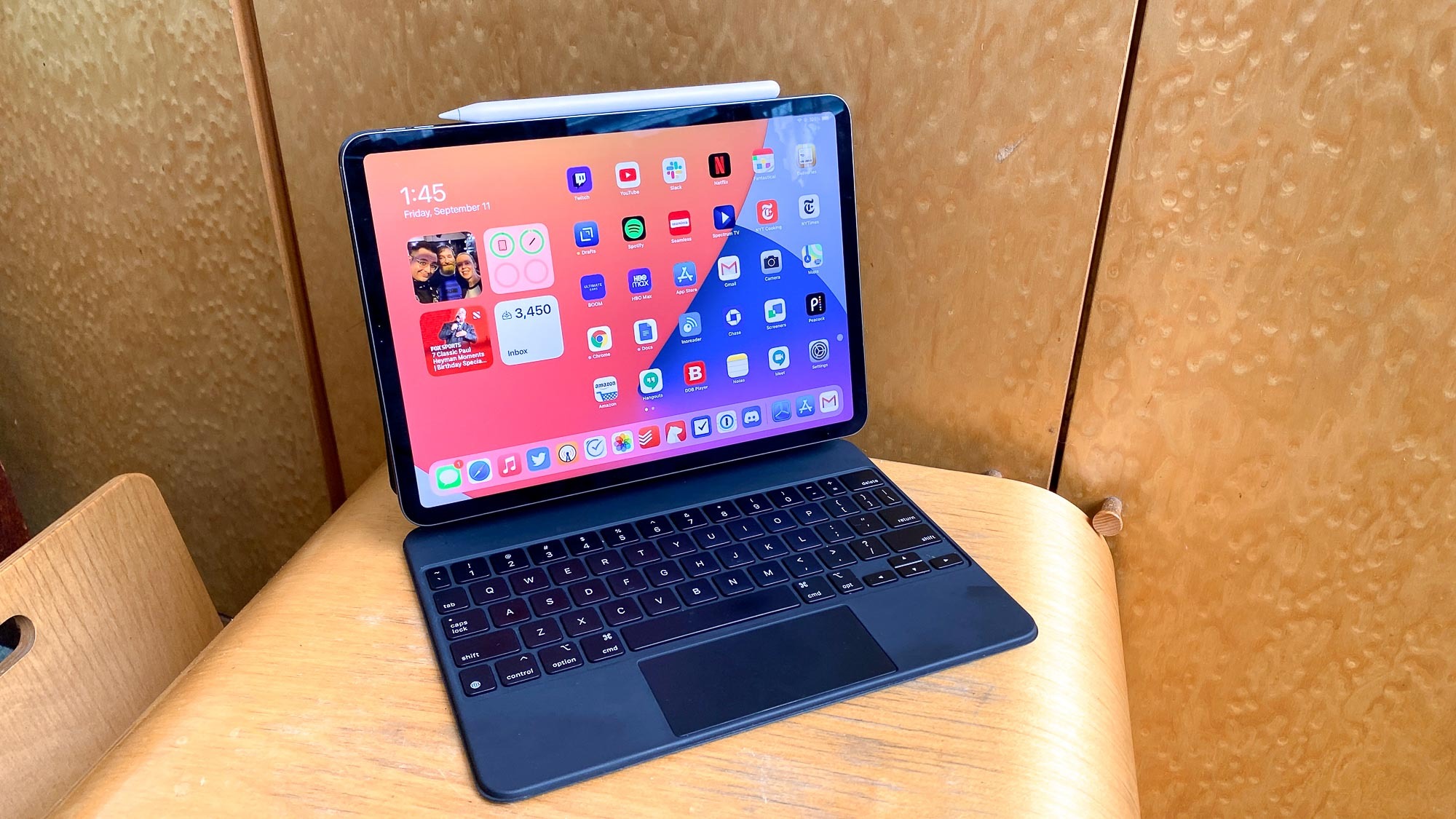This iPad Pro upgrade is so good I’ve almost stopped using my MacBook Pro
How the iPad Pro Magic Keyboard really completes the best tablet experience

The iPad Pro is finally catching up with the MacBook Pro, at least for me.
Even with all of the ways macOS Big Sur still beats iPadOS 14 (Apple's app sandboxing is great for security and bad for productivity) I've noticed that ever since I got the iPad Pro's Magic Keyboard, I've used my 13-inch MacBook Pro less and less around the house.
- iPad Pro vs iPad: Which is right for you?
- iPhone 12 leak just dashed hopes for killer upgrade
- New iPad 8: Release date, price and what we want to see
That's because, unsurprisingly, the iPad Pro is still kinda what the original iPad was all along: a bigger iPhone. That's always been a good thing in my book because iOS apps became the most important apps in my day to day life, so much so that I pay for a bunch of them, on a subscription basis.
The iPad Pro deserved this keyboard
The Magic Keyboard became the big revelation for me about the iPad Pro because third-party keyboards never really felt right. Apple's official iPad keyboard covers and Magic Keyboard pair instantaneously (thanks to the Smart Connector that no other company's keyboard works with), and I will do everything I can to avoid ever futzing with Bluetooth settings.
But this also hindered my typing, as Apple's Smart Keyboard covers — with much shorter travel and a fabric-like texture — never truly clicked with me, creating slightly awkward experiences.
The iPad Pro Magic Keyboard is no such impostor.
Even though I'd like it a lot more if I had a 12.9-inch iPad — which would give me a less cramped typing experience — these keys do in fact truly click with me, with more vertical travel and larger key caps. So when it comes time to manage my ever-growing task list in Todoist, draft a personal blog in Bear or simply dash out replies to emails or texts from family and friends in Messages and Gmail, I'm simply a more productive typist on the iPad Pro than I've ever been before.
Get instant access to breaking news, the hottest reviews, great deals and helpful tips.
There's also the rare website or few that are designed with much smaller touch targets. Those used to be a problem with the iPad Pro and Smart Keyboard, because of the lack of a touchpad. Now, the cursor in the Magic Keyboard gives you far more precision when you click around the internet.
Where the iPad Pro beats the MacBook Pro
A fair amount of why I prefer the iPad Pro comes down to its screen and shape. The 2018 iPad Pro I've been using produces up to 111% of the sRGB gamut and gets as bright as 572 nits. That makes it about as colorful as — but a fair bit brighter than — the 2020 MacBook Pro (114%, 485 nits).
That means when I want to watch another episode of Avatar The Last Airbender or Schitt's Creek on Netflix, the iPad Pro simply beams brighter. And I don't need to worry about battery life since I've got USB-C cables everywhere.
Also, and this is a case of smaller things are lighter, the 11-inch iPad Pro docked to the Magic Keyboard weighs only 2.3 pounds, 0.8 pounds less than the 13-inch MacBook Pro (3.1 pounds). The 12.9-inch iPad Pro with Magic Keyboard weighs 3 pounds, and I don't want to wager that I could tell the 0.1 pound difference by hand.
Slowly but surely, all of my favorite apps are getting Mac versions (and Apple Silicon Macs will run iOS apps too), but we're not 100% there yet. Plus, until the Mac gets a touch screen, iPhone and iPad apps won't really feel the same. It's like using Android apps on a Chromebook, with or without a touch screen: they're made to be tapped, not moused-over.
The other difference-maker for the iPad Pro is the 2nd Gen Apple Pencil, which has become a heck of a lot smarter. Scribble, a new handwriting-to-text recognition tool in iPadOS 14, is the kind of trick that makes a solid case for touchscreens. Hopefully Apple will find a way to place Scribble into the Apple Silicon MacBook touchpads.
Why I still use the MacBook Pro on occasion
In fact, there's only one reason why I ever really need that MacBook Pro anymore: when my day job spills over into after hours time. That's when I need true Chrome — with all of its extensions — for using the content management system (CMS) that we rely on at Tom's Guide.
iPadOS (just like iOS) still doesn't support a web browser that isn't built on Safari's WebKit engine, and every time I try to do the finishing touches on an iPad (or my iPhone), everything doesn't work cleanly enough.
So, while macOS is more capable at having apps that work together, especially for the rare occasions when I need to use Skype and record audio from it at the same time for podcasting, I'm finding that the tricks and tools of the iPad Pro, along with its excellent screen, make it the primary device I move to when I leave my work computer at the end of the day.
- The Boys season 2 release schedule: When is the next episode?
- Just in: Zoom security alert — turn this feature on right now

Henry was a managing editor at Tom’s Guide covering streaming media, laptops and all things Apple, reviewing devices and services for the past seven years. Prior to joining Tom's Guide, he reviewed software and hardware for TechRadar Pro, and interviewed artists for Patek Philippe International Magazine. He's also covered the wild world of professional wrestling for Cageside Seats, interviewing athletes and other industry veterans.
